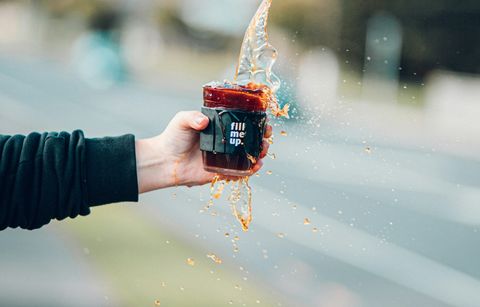We have been busy updating the Popover and CSS Anchor Positioning Polyfills,
adding support for hint popovers, position-area, and more. A huge thank
you to our sponsors and contributors! If you or your company would like to
support these projects, there is much more we could do to improve polyfills for
users.
Popover updates
In early May, we released
v0.6.0 of
@oddbird/popover-polyfill.
hint=popover
The major update to the Popover polyfill was support for hint popovers. This
addition to the Popover API adds an extra stack of popovers that act similar to
auto popovers, but are more ephemeral.
As an example, an auto popover might be used for a dropdown. Opening a tooltip
shouldn’t close the dropdown, but it should close other tooltips. You can use
hint popovers to declaratively author this functionality.
Read more about popover=hint
on the Chrome for Developers blog, or the original Open UI
proposal.
Updates to JavaScript methods
We also updated showPopover() and togglePopover() to accept an object as an
argument. Initially, togglePopover() only accepted a boolean force, to
either open or close the popover. However, the spec was updated to add a
source parameter to showPopover() and togglePopover(), so we updated the
polyfill to allow that format.
Why use togglePopover({force: true}) instead of showPopover()?
If you call showPopover() on a popover that is already shown, the native
browser implementation will throw an error. If you aren’t sure if the popover is
already shown, you may instead want to call togglePopover({force: true}),
which will show it if it isn’t already shown, but will not throw an error if it
is.
In addition, togglePopover() now returns a boolean value indicating whether
the popover is shown after the method executes.
What’s next for the Popover polyfill?
The Popover API has 4 to 18 months of support in all major browsers, but hint
popovers have only been available in Chromium browsers for a few months.
This means that many users are on a browser that supports the Popover API, but
not hint popovers. This is a problem for the polyfill, as it only can polyfill
from no support to full support – partial polyfilling is not supported.
We would love to selectively polyfill popover=hint in browsers that have
support for the Popover API, but we anticipate that this will take a fair amount
of investigation and effort. You can track our progress on the Github
issue.
Read more or try out the Popover polyfill at https://popover.oddbird.net/.
CSS Anchor Positioning updates
In April, we released
v0.5.0
of
@oddbird/css-anchor-positioning,
followed by
v0.6.0
in May. This was the result of a lot of useful feedback and bug reports from our
users.
position-area support
While the polyfill has supported anchor() functions since the initial release,
I expect that position-area will be the more common method for placing items.
All 50 keywords for position-area are now supported, respecting writing mode
and text direction.
You can see some demos here.
Working towards spec parity
We also added support for inside and outside keywords on physical insets –
for instance with left: anchor(inside), which is equivalent to left: anchor(left).
anchor-size is now supported on margin and inset
properties, in
addition to the sizing properties that were already supported.
Internal improvements
- We reduced the built size of the polyfill by half by curating the external
dependencies required at run time.
- We added support for previewing the built polyfill from a pull request, which
allows us to quickly get feedback from users or test a change on CodePen.
- We discovered our approach of replacing polyfilled stylesheets from
<link>
elements with <link> elements loading from generated blob: URLs was
breaking relative paths for assets like images, fonts, or stylesheets included
with @import. Our approach of replacing these with <style> elements has
fixed a number of these problems.
Bramus’s recent proposal for CSS Parser
Extensions does a
great job naming one of the main challenges of writing a CSS polyfill. His
estimate is that we could reduce the size of the CSS Anchor Positioning polyfill
by 85% if we didn’t have to parse the CSS ourselves.
What’s next
One of the frustrating caveats for our users has been that the polyfill can only
affect elements and styles that are present when the polyfill is run. This
creates issues for users with dynamic content, or who are using frameworks like
React. While we have collaborated with users to find ways to work around the
issue, we would love to solve the issue of dynamic elements.
This is not a small task, but I think it would make it possible for a lot of
users to adopt the polyfill in their project, and by extension, start using
Anchor Positioning. You can follow that
issue to find out
more.
Can you help?
Over the last few months, we’ve enjoyed the chance to make a lot of updates to
meet users’ needs. Unfortunately, this rate of progress isn’t sustainable
without additional support.
If your company is using our polyfills, or if one of the issues above is
blocking you from using our polyfills, support us on Open
Collective or get in
touch about supporting a specific feature.
We would also welcome any code contributions if you’d like to help out that way
instead!









